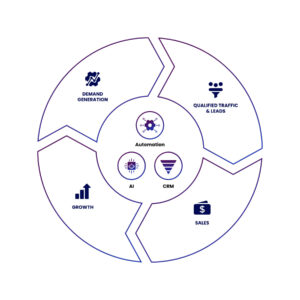When shopping for a car, you often hear the term “car spec” tossed around. It might appear in sales brochures, automotive reviews, or online comparison tools. But what does “car spec” really mean, and why is it so important to understand before making a purchase? This guide is designed to break down the concept of car specs and explain how knowing them can help you make a smarter buying decision.
What Does “Car Spec” Mean?
Car spec is short for car specifications. It refers to the technical details and features of a vehicle that describe how it is built, how it performs, and what features it offers. Whether you’re buying a small city car or a luxury SUV, car specs offer an inside look at everything the vehicle is capable of.
These specs typically include information such as:
-
Engine size and power
-
Fuel economy
-
Transmission type
-
Dimensions and weight
-
Safety features
-
Entertainment systems
-
Seating capacity and storage
-
Performance data (e.g., acceleration, top speed)
Why Car Specs Matter
Understanding car specs is essential because:
-
They help you compare cars accurately.
-
They influence driving experience and maintenance costs.
-
They indicate fuel efficiency, safety, and comfort.
-
They reveal whether a car suits your daily needs, be it commuting, long-distance travel, or family trips.
For example, a person looking for a fuel-efficient city car may prefer a 1.2L engine with a mileage of 20+ km/l, while a buyer interested in performance might opt for a turbocharged 1.5L engine with more horsepower and torque.
Core Elements of a Car Spec Sheet
Let’s explore the most common specifications found in any car’s datasheet:
1. Engine and Performance
The engine is often the first and most critical spec buyers look at.
-
Engine Displacement (cc or liters): Indicates the volume inside the engine’s cylinders. A higher number typically means more power.
-
Horsepower (hp or PS): Tells you how powerful the engine is. More horsepower often equals faster acceleration.
-
Torque (Nm): Describes the engine’s pulling power. More torque is better for hauling loads or climbing hills.
-
Turbocharged vs. Naturally Aspirated: Turbo engines offer more power but may be less fuel-efficient in traffic.
2. Transmission Type
-
Manual Transmission (MT): Allows the driver full control over gear changes.
-
Automatic Transmission (AT): Easier to drive in city traffic; available in CVT, DCT, or torque converter types.
-
CVT (Continuously Variable Transmission): Offers smoother, stepless gear shifting.
-
DCT (Dual-Clutch): Faster gear changes; preferred in performance cars.
3. Fuel Efficiency
One of the top concerns for Indian car buyers is mileage.
-
Measured in kilometers per liter (km/l).
-
Based on ARAI-certified mileage and real-world usage.
-
Petrol cars usually offer 17–22 km/l.
-
Diesel cars may offer 20–25 km/l.
-
Electric vehicles (EVs) display mileage as range per charge.
4. Drivetrain and Suspension
-
FWD (Front-Wheel Drive): Common in most cars; efficient for daily driving.
-
RWD (Rear-Wheel Drive): Found in luxury or performance vehicles; improves handling.
-
AWD/4WD: Offers better traction for off-road or poor weather.
Suspension types like MacPherson struts and torsion beams influence ride comfort, while independent suspension improves handling.
5. Dimensions and Capacity
Car specs also include physical measurements that impact usability:
-
Length, Width, Height: Affects parking, cabin space, and street presence.
-
Wheelbase: Distance between the front and rear axles. A longer wheelbase generally offers more legroom.
-
Boot Space (Litres): Indicates luggage space. Sedans offer more than hatchbacks.
-
Ground Clearance: Higher clearance is better for Indian roads and speed breakers.
6. Safety Features
Modern car specs now emphasize safety features due to rising awareness and regulations.
-
ABS with EBD: Mandatory in all cars; improves braking control.
-
Airbags: Dual airbags are standard; higher trims may offer up to 6 or more.
-
Rear Parking Sensors & Camera
-
Electronic Stability Control (ESC)
-
Hill-Hold Assist
-
NCAP Safety Ratings (1 to 5 stars): A critical indicator of crash protection.
7. Infotainment and Interior Features
Infotainment specs can vary drastically across variants:
-
Touchscreen Display (7–10 inches): With Apple CarPlay and Android Auto.
-
Voice Commands and Navigation
-
Premium Sound Systems (Bose, JBL, etc.)
-
Wireless Charging and USB Ports
-
Automatic Climate Control and Rear AC Vents
Interior materials such as leatherette seats, soft-touch dashboards, and ambient lighting also count as part of the car spec in premium models.
How to Read a Car Spec Sheet
Most manufacturer websites and auto portals like ZigWheels, CarWale, and Autocar India present specs in a table format. Here’s an example:
| Feature | Car A (Budget Hatch) | Car B (Compact SUV) |
|---|---|---|
| Engine | 1.2L Petrol | 1.5L Turbo Petrol |
| Transmission | 5-Speed Manual | 6-Speed Automatic |
| Mileage | 21.5 km/l | 17.2 km/l |
| Boot Space | 270L | 410L |
| Ground Clearance | 170 mm | 205 mm |
| Safety Rating (GNCAP) | 4-Star | 5-Star |
What Specs Are Most Important for You?
Different buyers focus on different specs based on needs:
-
City Commuter? Focus on fuel efficiency, compact size, and automatic transmission.
-
Family Car? Prioritize boot space, seating comfort, and safety features.
-
Adventure Enthusiast? Look for AWD, higher ground clearance, and durable suspension.
-
Luxury Seeker? Premium interiors, infotainment, and smooth ride quality matter most.
Car Spec Terms You Should Know
Here are some common car spec abbreviations:
-
BHP: Brake Horsepower
-
Nm: Newton Meter (torque)
-
MT / AT / CVT / DCT: Transmission types
-
ARAI: Automotive Research Association of India (tests mileage)
-
GNCAP: Global New Car Assessment Programme (safety ratings)
-
TPMS: Tyre Pressure Monitoring System
Conclusion
Understanding a car spec sheet is like reading a blueprint of how a vehicle will perform and behave on the road. It gives you all the tools to make an informed decision, whether you’re looking for a fuel-sipping hatchback or a feature-packed SUV. Knowing what each spec means—and how it relates to your needs—can help you choose a car that’s not just attractive on the outside but also the right fit for your lifestyle.
Before you step into a dealership or hit “Book Now” on a website, take the time to compare specs, read reviews, and prioritize what matters most to you. A well-informed car buyer is always a satisfied car owner.




